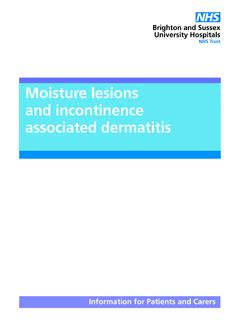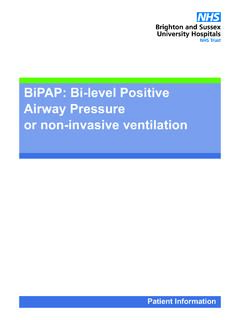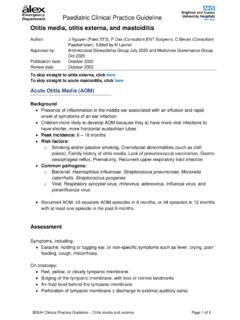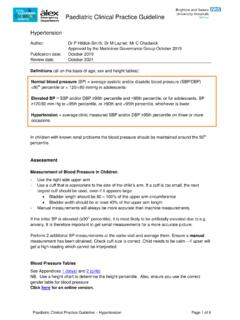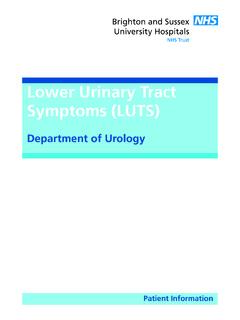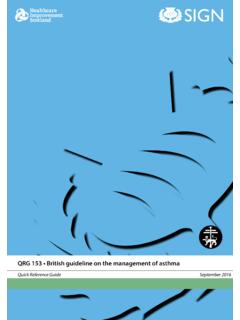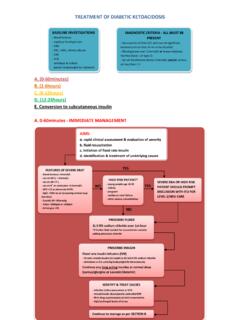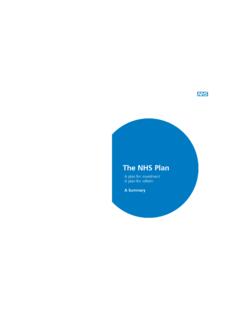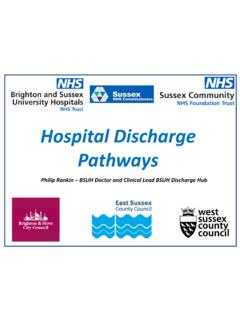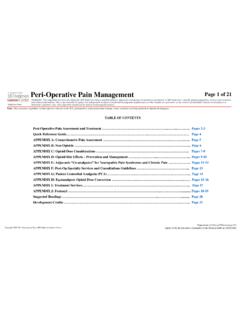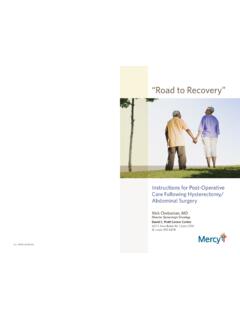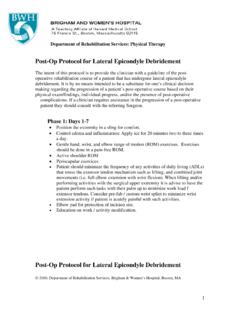Transcription of How to care for your post-operative hip/knee wound ...
1 How to care for your post- operative hip/knee wound following a total hip replacement /. total knee replacement Information for patients Dressing change Your dressing can remain in place for up to 7 days from placement in theatres. If the dressing has moved out of place or becomes fully saturated, it will need changing. The pictures below will give you some indication as to when a dressing change will be necessary. When to change/not change your dressing You do not need to change your dressing if it looks like this: 1 2 3. Your dressing will need to be changed if it looks like this: 4. Nursing staff will change your dressing before you go home if necessary. If you have been discharged and your dressing looks like photo 4, is leaking or you are concerned, please change your dressing and contact the ward you were discharged from.
2 Blisters are not uncommon. If you develop blisters after discharge, contact the ward for advice. How to change your dressing 1 3. 2. 4 5. 6 7. 10. 8 9. Patient guide to wound care and FAQ. What kind of dressing is on When I should contact the ward? my wound ? If the dressing is leaking or After surgery the majority of patients saturated or looks like picture 4. have a Mepilex Border dressing If the surrounding skin has become which can remain in place for 7 days. red and spreading outwards If there is in an increase in pain This dressing may have been changed or odour on the ward and you may have The dressing has moved and the a transparent adhesive dressing. wound is now visible Increased discharge and foul What should I expect from smelling discharge the dressing?
3 If blisters develop around your It is normal for your wound to surgery site. release blood and fluid when it's been closed surgically. Tel: 01444 441881. Ask switch to transfer you to the Can I shower with the dressing? ward you were discahrged from - Yes. It is shower proof but it's Newick, Albourne or Twineham. recommended to keep it as dry as possible. The dressing will only stick When should my dressing to dry skin. If the skin becomes too be changed? moist the dressing will simply fall off. Please follow the advice on the nursing discharge letter. When showering, place your back You will be given a surgical dressing to the shower to avoid the shower to take home. Please follow directly going onto your dressing. photographic instructions on how to change the dressing.
4 For maximum effectiveness of the dressing it must remain in place. Please do NOT remove the dressing earlier than the scheduled date. Brighton and Sussex University Hospitals NHS Trust Disclaimer . The information in this leaflet is for guidance purposes only and is in no way intended to replace professional clinical C P I G. advice by a qualified practitioner. Ref number: Publication Date: November 2019. Review Date: November 2021 carer and patient information group approv
